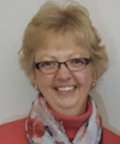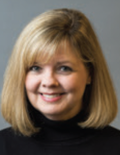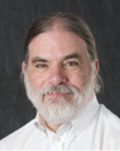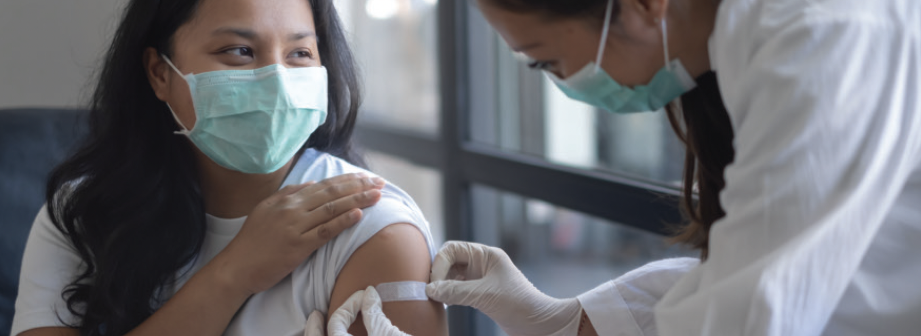The COVID-19 pandemic: Where we stand now
 Lisa Clute, First District Health Minot, Ward County executive officer |
 Alana Knudson, NORC Walsh Center for Rural Health Analysis director |
 Fred Ullrich, Iowa College of Public Health Dept. of Health Management and Policy program director |
Nearly two years after the advent of the COVID-19 pandemic, science is still revealing new facts about the SARS-CoV-2 virus, who’s most vulnerable, and how well vaccines are working to stem its spread. But in rural America, several key understandings have emerged: Rural residents have been hit harder by infection rates and deaths than urban dwellers, while also facing regionspecific challenges related to vaccine uptake.
There has been a tremendous impact,” says Lisa Clute, executive officer of the First District Health Unit for the state of North Dakota. “Funeral homes and churches really struggled with being able to provide families the services in rural communities they were accustomed to. And the isolation in a rural community takes a tremendous toll. It’s been heartbreaking.”
“In rural communities, we know everybody,” Clute adds. “So it’s all very personal.”
Stark statistics
The raw statistics are stunning: About 47 million cases of COVID-19 were reported in the United States by mid-November 2021. While cases in rural areas trended just below urban areas for about the first eight months of the pandemic, data from the Centers for Disease Control and Prevention (CDC) clearly marked a change in early November 2020.
Since then, non-metropolitan areas surpassed, briefly equaled, and then skyrocketed beyond urban areas in COVID-19 caseloads. By mid-November 2021, this trend was pronounced, with nearly 15,600 new cases per 100,000 rural residents over the prior seven days, compared to 14,000 new cases per 100,000 urban residents.
"This notion that rural community protection is paramount to people’s behavior is really not what we once thought it was. And it may not be the case everywhere, but in some of the work we’ve been doing, it comes through."
-Alana Knudson
Similarly, death rates in rural areas have significantly exceeded those in urban areas. After lagging considerably, mortality in rural regions jumped above urban zones by mid-December 2020 and has continued to surpass them ever since, according to the CDC. By mid-November 2021, rural regions recorded 279 deaths per 100,000 residents, compared to 222 per 100,000 in urban areas, behind only heart disease and cancer.
Reasons for disparities
Rural communities were slower to grasp that COVID-19 was a major danger simply because it took months longer for infections — and then deaths — to hit crisis levels, experts say.
“There was the sense that, ‘We’re remote and sparsely populated,’ that this was something they didn’t need to pay attention to, and that clearly wasn’t the case,” explains Fred Ullrich, program director for research activities in the Department of Health Management and Policy at University of Iowa College of Public Health. “Part of the issue is the blaze has been smoldering low enough that it hasn’t gotten enough people’s attention.”
Because the threat seemed abstract, rural residents often didn’t use masks or social distance in ways recommended by federal or state authorities, says Alana Knudson, PhD, director of NORC’s Walsh Center for Rural Health Analysis at the University of Chicago.
"When we get through this public health emergency, we will undoubtedly face another … but I’m really hoping this experience helps us think about how our rural public health can be strengthened and how we want it to look going forward."
-Fred Ullrich
“Sometimes the state policy for these measures may have even been counter to what was being recommended by their trusted rural providers,” Knudson says. As in urban areas, the myth that COVID-19 “is no worse than the flu” or has been blown out of proportion also still circulates, she says.
Another key influence on the rural-urban divide in caseloads and deaths, Knudson says, is that the pandemic is far from the only crisis rural residents have been juggling over the past two years.
“We’ve had communities with extreme drought, which means their water supply becomes undrinkable for either their animals or their own home,” Knudson explains. “There have also been flooding and wildfires. For those of us who spend their days focused on COVID-19, it’s important to remember there are many priorities for these rural communities.”
Vaccination rates vary
One trend similar between rural areas and national statistics is COVID-19 vaccination rates among seniors, experts note. Nearly 60 percent of the total U.S. population had been fully vaccinated by mid-November 2021, according to the CDC, including 86 percent of adults over age 65.
“That’s in part because older adults wanted the vaccination and were the first to be vaccinated,” Knudson says. “But it’s also important to remember that they remember when polio was a thing. They have a different perspective on it, because a lot of people in a younger cohort don’t know people who had polio.”
Where these rates deviate sharply downward in rural communities is among those younger than 65, experts note, fearing that the spirit of community that once permeated rural America has been replaced with skepticism and individualism. Part is due to the “feeling of having been left behind” after the recession that began around 2008, Knudson says.
“This notion that rural community protection is paramount to people’s behavior is really not what we once thought it was,” Knudson says. “And it may not be the case everywhere, but in some of the work we’ve been doing, it comes through.”
As with broader health care access, obstacles in rural regions can also shape who steps forward for a COVID-19 vaccine, experts point out. A public health lab testing water samples in a drought-ridden area now asks those dropping off samples if they’ve been inoculated. “A lot of times, they say they just haven’t gotten around to it,” Knudson says. “So the lab has made it super easy and has shots ready for those people on the spot. When they bring another sample in few weeks, they get their second shot.”

“Sometimes it’s just a proximity and time issue,” she adds. “Where do busy people go for a COVID-19 shot? Likely not to a ball stadium.”
Education strategies: What works?
It’s not always easy to convince rural residents that vaccines offer greater protection against COVID-19 than the “natural immunity” they may feel they gain from catching the virus. An October 2021 report from the CDC found that unvaccinated people were more than five times as likely to test positive for COVID-19 as those who had been inoculated within the past three to six months, even if they recently had the virus. The Kaiser Family Foundation estimates that approximately 90,000 COVID-19 deaths among adults likely would have been prevented with vaccination since it became available.
Coaxing the vaccine-hesitant in rural areas — who like others across the country are often driven by misinformation and political affiliation — to roll up their sleeves sometimes means using a lesser-of-two-evils strategy, with mixed results.
Clute says this comparison is certainly not as effective in the push to vaccinate children. “People counter that with the low death rate for COVID-19 among those 0 to 9 years old,” she says. “They’re not willing to take that risk” with vaccines. “I don’t know how that argument is going to continue to fare, but it’s problematic.”
Nearly two years into the pandemic, experts say establishing call centers that can answer questions related to COVID-19 symptoms, testing, vaccines, and any other concerns are among the most successful tactics to relay accurate information rural residents will trust.
“The larger media campaigns have’t proven to be effective in our community,” Clute says. “What is effective is if they have a person to call, specialists who people know locally. They don’t necessarily trust national figures right now. It doesn’t mean we’ll convince everyone, but it is our most effective way of doing that.”
What else seems to work?- Take an individual approach: “Within the rural community, it really is just talking one-on-one and working on community-wide policies to slow the spread,” Clute says.
- Be transparent: “The information we’re getting about the virus changes,” Knudson acknowledges. “We need to present that information in a very factual manner so people have the correct information.”
- Be persistent: “It may take more than one call or one contact for some people concerned about getting the vaccine,” Knudson says. “It may take two or three touch points.”
Forging ahead
Forging ahead
Ripple effects from the pandemic, even as it ebbs, will batter rural America for a long time to come, experts say.
A “tired and burned out” health provider and public health workforce may indeed permeate the nation as a whole, Knudson notes. But rural communities will be hard-pressed to replace workers lost to attrition simply because fewer are waiting in the wings.
“We don’t have the staff to backfill these positions,” she says. “If we burn people out or they get sick caring for others, it’s very difficult finding someone else to fill that role. It’s a different consequence than an urban area where the workforce supply is much greater.”
Ullrich is worried vaccine uptake in rural communities may continue to lag with the advent of new COVID-19 treatments, including pills that can dramatically cut the risk of hospitalization and death in those with mild to moderate infections.
“I’m concerned that people will think, ‘I don’t have to get vaccinated because I can get treated if I have the disease,’” he says. “We still have no sense of the long-term implications of getting the disease, whether you’re treated or not. It’s the wrong way for people to think.”
“When we get through this public health emergency, we will undoubtedly face another public health emergency or another disaster — hurricanes, wildfires, chemical spills — but I’m really hoping this experience helps us think about how our rural public health can be strengthened and how we want it to look going forward. And it may not be the same model we use today.”
